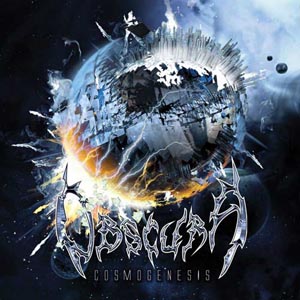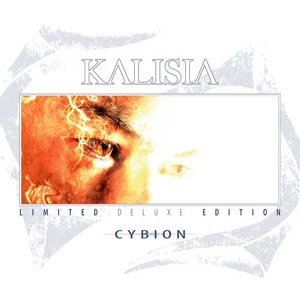Blaspherian comes from Houston, Texas, and makes old school death metal with its own voice. Their music does not sound like any known band but is clearly influenced by the old school of booming, primitive, dark, introspective and alienated metal. Formed in 2004, Blaspherian arose from the collaboration of Wes Infernal — formerly of Infernal Dominion and Imprecation — and Desekrator, but rapidly branched out to include Matt Mayhem on drums and Apollyon on vocals and bass.
Since that time, through several releases culminating in Allegiance to the Will of Damnation, after which Joe Nekro replaced Apollyon, the band has been crawling its way to the top of the Texas death metal stack, and will release a new album, Infernal Warriors of Death, shortly. We were fortunate to get some moments to talk with members Wes Infernal (guitars) and Matt Mayhem (drums) about this raging force of death metal.
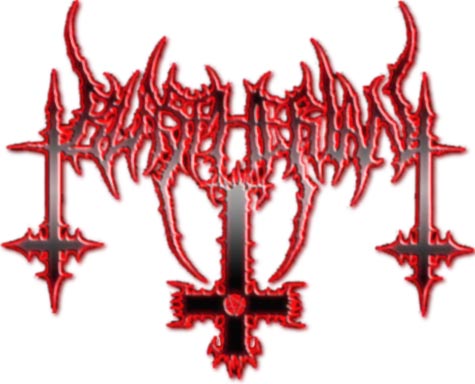
Is it hard for you to create new riffs, ideas, songs and a “voice” for yourselves in old school death metal, since so much of the genre was established before?
WES: Not at all. We’ve been at this for long enough that it comes quite naturally, although there are occasional “dry spells.” One thing that sticks out is out guitar sound… once you hear it, you know it’s us. That and the way I write creates an original “voice” for us, as I see it.
MATT: Wes and I continuously get better at writing together. I think both of our hearts are in death metal. That and our strict guideline of writing songs is what keeps the ideas flowing. The right part for the wrong song, the song as a whole, and most importantly to remain evil and heavy at all times.
BLASPHERIAN finally has a stable line-up. How did you (Matt and Wes) decide to form the band; what was the catalyst?
W: BLASPHERIAN was created by myself and Desekrator, the original vocalist. Matt joined a short time afterwards, when Desekrator and I decided to get a lineup together. We originally had the idea of starting a thrash band back in 2004, but then I realized for me it had to be Satanic death metal, as that’s my true unholy calling. I had been without a band for about a year, and had enough time off…it was time to create this sick unholy force known as BLASPHERIAN.
I went to the Garden of Love,
And saw what I never had seen;
A Chapel was built in the midst,
Where I used to play on the green.
And the gates of this Chapel were shut,
And ‘Thou shalt not’ writ over the door;
So I turned to the Garden of Love
That so many sweet flowers bore.
And I saw it was filled with graves,
And tombstones where flowers should be;
And priests in black gowns were walking their rounds,
And binding with briars my joys and desires.
– William Blake, Songs of Experience (1794)
Have the values of metal music changed from the early 90s? How, and what does it make you think?
W: The values have not changed for the diehards, for the true. But in the poseur world, of course their values change with every trend, with most of them eventually getting out of the scene altogether. To me, metal is a way of life, forever — until death. Long live the true metal warriors of death!
M: Unfortunately, I wasn’t there to experience the glory of the old days. I’m only 25, but the majority of the death metal I listen to is from the late 80s to early 90s. From what I see happening now, there are a lot of new killer bands coming out that keep that tradition alive. People are getting fed up with the bullshit that’s labeled “metal music” nowadays and rightfully so.
Wes Infernal has hosted the “From the Depths” radio show for a long time now. How long has it been, how has the show contributed to knowing metal, and has it showing you what is important to the listening audience influenced your approach to writing music?
W: I’ve done “From the Depths” since 2000, anno satanas. The show really hasn’t contributed to me knowing metal. I do the same things I’ve always done: buy CDs, collect records and magazines. The fun is turning all the listeners on to the stuff I get.
M: Honestly, I think to the older generation “Sweet Nightmares” was more important. Especially from the late 80s through the 90s. I know from my own experience before meeting Wes, “From the Depths” was definitely a pivotal point as far as finding out about new music goes. Me and my friends would get together and drink every Sunday and listen to awesome music we had never heard before. It eventually became a game of sorts, guessing which band he was playing at the time as well as an opportunity to test your knowledge of the underground.
When the band HELLHAMMER said, “Only Death is Real,” what do you think that meant?
W: To me, HELLHAMMER were one of the first metal bands to introduce death into their lyrical and visual themes. Life is short, death is eternal, therefore only death is real.
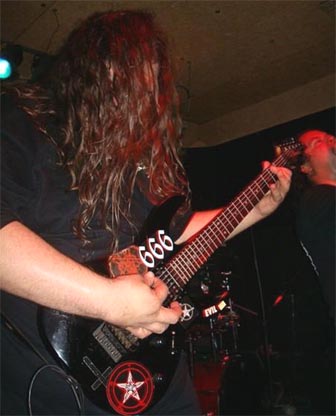 What were the early influences on your playing and songwriting, both individually and as a band?
What were the early influences on your playing and songwriting, both individually and as a band?
W: Without a doubt, POSSESSED… and SLAYER. Which later developed into DEATH, MORBID ANGEL, etc.
M: In the beginning I think we were very influenced by INCANTATION, DEMIGOD, IMMOLATION, GRAVE, MORBID ANGEL and POSSESSED. I still try to incorporate those influences as much as possible, but I think that BLASPHERIAN has developed into its own beast by now! As far as drumming influences: Chris Reifert (AUTOPSY), Jim Roe (INCANTATION), and Craig Smilowski (IMMOLATION) are considered before all!
Does being fully metal conflict with having a career, family or non-metal friends? How do you all balance being in an occult death metal band with the needs of normal life?
W: Yes. It’s not easy, dealing with people that do not, and will not ever, understand the things I believe in or the things I do. You just have to go through life standing up for what you believe in. Try to explain, and most never get it. The few that do still think you’re crazy, which to me is hilarious. Explaining to a Christian how they are the embodiment of the herd mentality, and a slave in every way possible — I look forward to it sometimes.
When you write songs, do you start with a concept, or a riff, or something else?
W: It works either way. Sometimes a song title can trigger music, sometimes music will conjure a song title. But for the most part, at least so far, music gets written first.
How did you learn to play? Do you use music theory or another method? Did musical illiteracy help or hinder you in learning to make music that sounded the way you wanted it to?
W: I used to just jam along to SLAYER, METALLICA, and DARK ANGEL records. That was the foundation for me to learn everything I needed to learn. I know very little theory, really it’s more about pure feeling and emotion, each riff must mean something on a purely emotional level. So to me musically illiteracy has definitely helped, as strange as that may sound, because I would hate to have any kind of limitations, which is what theory is in my opinion.
I am not disclosing any trade secrets. In fact, the manager said afterwards that Mr. Kurtz’s methods had ruined the district. I have no opinion on that point, but I want you clearly to understand that there was nothing exactly profitable in these heads being there. They only showed that Mr. Kurtz lacked restraint in the gratification of his various lusts, that there was something wanting in him — some small matter which, when the pressing need arose, could not be found under his magnificent eloquence. Whether he knew of this deficiency himself I can’t say. I think the knowledge came to him at last — only at the very last. But the wilderness had found him out early, and had taken on him a terrible vengeance for the fantastic invasion. I think it had whispered to him things about himself which he did not know, things of which he had no conception till he took counsel with this great solitude — and the whisper had proved irresistibly fascinating.
– Joseph Conrad, Heart of Darkness (1902)
Starting with INCANTATION, occult death metal bands have a unique way of titling their songs, like “Enthroned in Blasphemous Triumph” that emphasizes an older, more complex, more formal way of speaking. Why do you think that is?
W: I’m not really sure. I just know I like titles like that — they are from the heart, that is the heart of pure darkness and evil — and to me that’s what it’s all about.
What are the differences between BLASPHERIAN and IMPRECATION, and how do these reflect what you’ve learned or thought in the intervening years?
W: The most obvious difference is that Phil and Ruben wrote most of the music in IMPRECATION, at least early on. In BLASPHERIAN, I write 99% of the music thus far. I will say that without IMPRECATION, there would be no BLASPHERIAN…plain and simple. Those guys showed me everything, 666 goat hails to those wonderful lads!
What distinguishes great music from bad? Can it be distilled into technique, or is it something less easily defined?
W: Lack of honesty, really. You know you hear something, and you know if it’s real; to me that’s the most important thing, moreso than sound quality or production…those things mean nothing. It’s what’s in the intent, the meaning behind the music, that matters, not production.
Your riffs sound to me like there’s a heavy MORPHEUS DESCENDS and ASPHYX influence. What are the pivotal bands for all old school death metal acts to know?
W: I love old MORPHEUS DESCENDS but it’s not like I listen to them all the time. More often, I listen to IMMOLATION, INCANTATION, old MORBID ANGEL, GOREAPHOBIA, and of course IMPRECATION. You mentioned ASPHYX; I would definitely throw them in there as well as old DEICIDE, PARALYSIS, CRUCIFIER… so many.
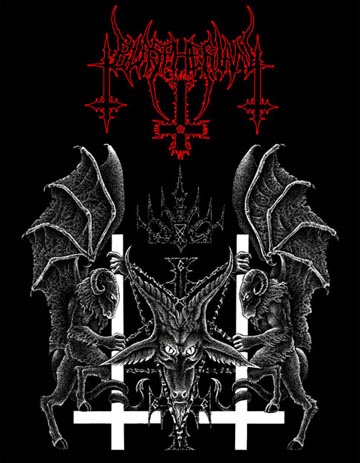 If you could re-live the underground years of 1988-1994, what would you do differently? Do you think that kind of era is coming back again for metal?
If you could re-live the underground years of 1988-1994, what would you do differently? Do you think that kind of era is coming back again for metal?
W: I’d collect more old records, go to more shows, collect more demos and posters. I’d keep all of my old stuff in better condition. Some of it got fucked up along the way. I hope the old era will come back. It seems to be going in that direction, at least on an underground level. A lot of the newer death metal bands are keeping the old spirit alive, like DEAD CONGREGATION, NECROS CHRISTOS, just to name a few. Hail to the old school, and hails to those that keep it alive.
Is metal a culture, like many other “subcultures” which are part of this one big culture we call modern society? If so, what are its values?
W: In a way, it is a subculture. Definitely a counter culture to the norms of modern society. Metal values — hmm — standing up for real metal, as well as keeping vinyl, spiked gauntlets, denim vests, patches, crushing poseurs, collecting metal, not following the herd mentality…fighting against the blind Christian fools… you know, the fun stuff in life.
Some have claimed that art is a warning to society; others say art serves a necessary role in celebration of life. Still others believe it should celebrate the artist. Where, if anywhere, do these views intersect?
M: Our goal is to spread as much negativity as possible. The music is most important to us, not recognition as artists or opinions of others. We create this music for ourselves but we also welcome those that enjoy what we do as well.
Now that you’ve got several shorter releases out, the most prominent being 2007’s Allegiance to the Will of Damnation, how are you going to expand your empire? Has your songwriting or approach changed?
W: We’re working on our debut full length, for one. As for changes, there are none really but I think the new songs are stronger. Better riffs, better arrangements… and more fast stuff. But unquestionably along the same lines.
Although your music is old school death metal, your songs seem to concentrate on creating an atmosphere of pervasive doom, then rushing back into energetic metal as if to imitate a camera panning away from a battlefield of devastation. What is the importance of this atmosphere in your music?
W: Contrast, kind of like a roller coaster ride. Not all fast, not all slow, a mixture to keep things interesting. At least, that’s what I shoot for.
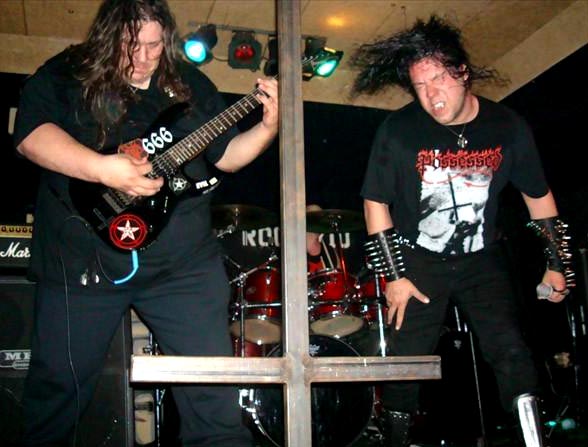
Is there a relationship between how an artist sees the world, and the type of music he or she will then make? Do people who see the world in similar ways make similar music?
W: Interesting question. I’ve never thought about it; I don’t see how others see. But if I had to guess I’d say no. I think for someone that feels exactly like me, their art could manifest itself completely differently. I mean, if you look at death metal, most bands sound different, but some may have the same hate and the same musical influences.
The CD version of Allegiance to the Will of Damnation has two additional tracks that the vinyl does not have. Were these recorded at the same time? What’s their story?
W: The first track we recorded as a band was “To Walk the Path of Unrighteousness” and it was for the split 7″ with Adumus. The other tracks were recorded at the same time. We used “Of Unholy Blood” for the split with Evil Incarnate. It’s been an honor to work with these bands, and with these labels…horns forever up!
I’m excited about how good this CD is and am looking forward to future output, live performances and presence in the genre from BLASPHERIAN. I think our readers are too.
M: Thank you Brett for the tons of support!
W: Thanks for the great interview, absolutely one of the best so far. Also thanks for the support, and thanks to all that support true death metal. We do this for ourselves, because we love to create heavy evil, Satanic music… it means a lot when others enjoy it as well. Look for our debut Infernal Warriors of Death soon. Hail!
We shall be able to gather, if not to create, this Life; to transmute it into other forms of force, as now we transmute heat to light. We shall be able to store it, to harness it, to guide it; to absorb its energy ourselves directly, without resorting to our present gross, inefficient, cumbrous and dangerous means of abstracting it from ores (if I may say so) mechanically, blindly, empirically, and with such toil and strife. Our journey–by such means of transit–is necessary and hateful; our travelling companions are our diseases, and the host to ease us at the end of the short, the weary day, is Death.
– Aleister Crowley, Liber CCCXLIII: AMRITA (1920)
Photos by AngelaTXDM
No Comments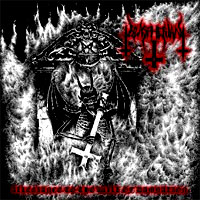
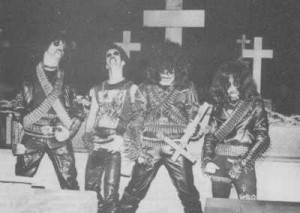
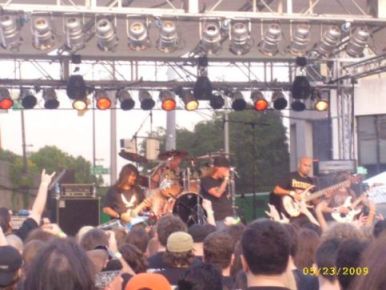 The next day, feeling energized and with ears freshly ringing, my group headed down to Sonar for day two of the festival. After skipping over the many bands of no interest, the first band of day two we encountered was P.L.F. (formerly known as Pretty Little Flower, now apparently going by the name Pulverizing Lethal Force). This Texas grindcore trio was highly impressive with their regressive style, revealing influences from the best of the genre, chiefly Assuck andTerrorizer. The singer/guitarist joked that their merch was available in the back room, and that they brought plenty of long-sleeved shirts, as only true Hessians wear them in such obscenely hot weather. Despite a very short set time, P.L.F. managed to rumble through their setlist with a few minutes to spare, and received mostly positive reactions from the audience.
The next day, feeling energized and with ears freshly ringing, my group headed down to Sonar for day two of the festival. After skipping over the many bands of no interest, the first band of day two we encountered was P.L.F. (formerly known as Pretty Little Flower, now apparently going by the name Pulverizing Lethal Force). This Texas grindcore trio was highly impressive with their regressive style, revealing influences from the best of the genre, chiefly Assuck andTerrorizer. The singer/guitarist joked that their merch was available in the back room, and that they brought plenty of long-sleeved shirts, as only true Hessians wear them in such obscenely hot weather. Despite a very short set time, P.L.F. managed to rumble through their setlist with a few minutes to spare, and received mostly positive reactions from the audience.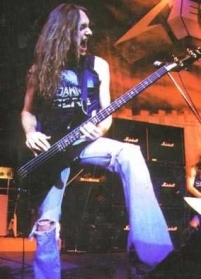
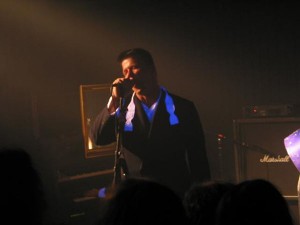
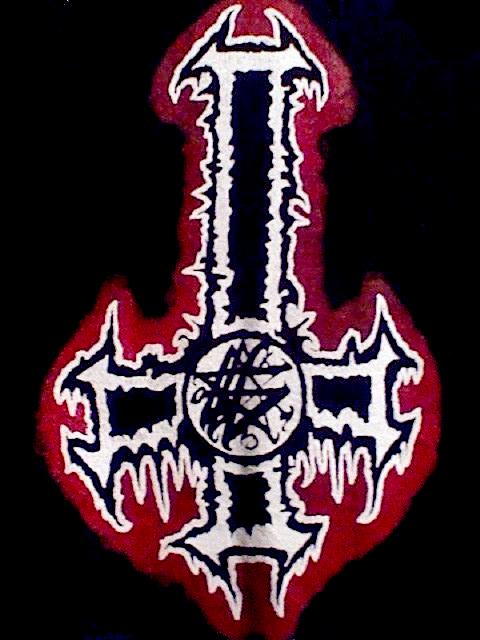 It was kinda strange, the whole “Earache” scene was starting to gain momentum, and yet there was an even ‘darker’ undercurrent that was gnashing it’s teeth into the throats of Christians. This is the cauldron that we bubbled out of! It was very unknown at the time, especially with everything being heard solely through tape trading or if you were lucky an underground radio program that would turn you on to bands that were only existing on word of mouth such as Incantation, Profanatica, Impaled Nazarene, Beherit, Phlebotomized, Demigod, Archgoat, and more. We had a radio program here in Houston called “Sweet Nightmares” airing on Tuesday nights/Wednesday mornings from midnight to like 4 am, hosted by Wes Weaver and Bill “the Master” Bates. We’d stay up out in the woods with lots of acid and alcohol and make bonfires to this radio program to check out all of the unknown stuff that they would turn us on to, it was such a drag when it stopped airing as this was a weekly ritual for us. I remember the first time I heard the new extreme in the underground, it was on this show in ’89 or ’90 and Wes had just got the advances from Earache of Morbid Angel’s “Maze of Torment” and Terrorizer’s “After World Obliteration”. He played them back to back and it completely floored us. That ‘s when I knew that I had to be creating this music, to actually live it!
It was kinda strange, the whole “Earache” scene was starting to gain momentum, and yet there was an even ‘darker’ undercurrent that was gnashing it’s teeth into the throats of Christians. This is the cauldron that we bubbled out of! It was very unknown at the time, especially with everything being heard solely through tape trading or if you were lucky an underground radio program that would turn you on to bands that were only existing on word of mouth such as Incantation, Profanatica, Impaled Nazarene, Beherit, Phlebotomized, Demigod, Archgoat, and more. We had a radio program here in Houston called “Sweet Nightmares” airing on Tuesday nights/Wednesday mornings from midnight to like 4 am, hosted by Wes Weaver and Bill “the Master” Bates. We’d stay up out in the woods with lots of acid and alcohol and make bonfires to this radio program to check out all of the unknown stuff that they would turn us on to, it was such a drag when it stopped airing as this was a weekly ritual for us. I remember the first time I heard the new extreme in the underground, it was on this show in ’89 or ’90 and Wes had just got the advances from Earache of Morbid Angel’s “Maze of Torment” and Terrorizer’s “After World Obliteration”. He played them back to back and it completely floored us. That ‘s when I knew that I had to be creating this music, to actually live it!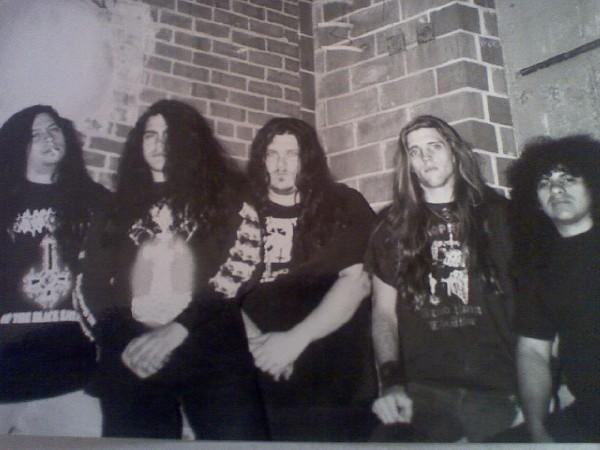
 No. It was only a small production, never meaning to be an official Imprecation release. If you got one, cool, but it stops at that cassette as far as our involvement with it. As far as Theurgia Goetia Summa, it will be re-released this summer on Die Todesrune records in Spain. The original release never gave proper credit to Phillip or myself. I mean, Phil wrote the music to at least 6 of those songs and my lyrics and vocals were on 6 of the nine tracks to no mention. Everyone who don’t know us think that Mark Beecher does all the vocals, when his vocal contribution stops after the third song. From then on it’s me, and Phil is playing the guitar on everyone of the Sigil of Baphomet and Ceremony tracks as well. So that’s gonna be re-released and also we have a killer new 7 inch that has been recorded on Negativity Records that will be entitled “Sigil of Lucifer”, to be released this summer.
No. It was only a small production, never meaning to be an official Imprecation release. If you got one, cool, but it stops at that cassette as far as our involvement with it. As far as Theurgia Goetia Summa, it will be re-released this summer on Die Todesrune records in Spain. The original release never gave proper credit to Phillip or myself. I mean, Phil wrote the music to at least 6 of those songs and my lyrics and vocals were on 6 of the nine tracks to no mention. Everyone who don’t know us think that Mark Beecher does all the vocals, when his vocal contribution stops after the third song. From then on it’s me, and Phil is playing the guitar on everyone of the Sigil of Baphomet and Ceremony tracks as well. So that’s gonna be re-released and also we have a killer new 7 inch that has been recorded on Negativity Records that will be entitled “Sigil of Lucifer”, to be released this summer.
 What were the early influences on your playing and songwriting, both individually and as a band?
What were the early influences on your playing and songwriting, both individually and as a band? If you could re-live the underground years of 1988-1994, what would you do differently? Do you think that kind of era is coming back again for metal?
If you could re-live the underground years of 1988-1994, what would you do differently? Do you think that kind of era is coming back again for metal?
